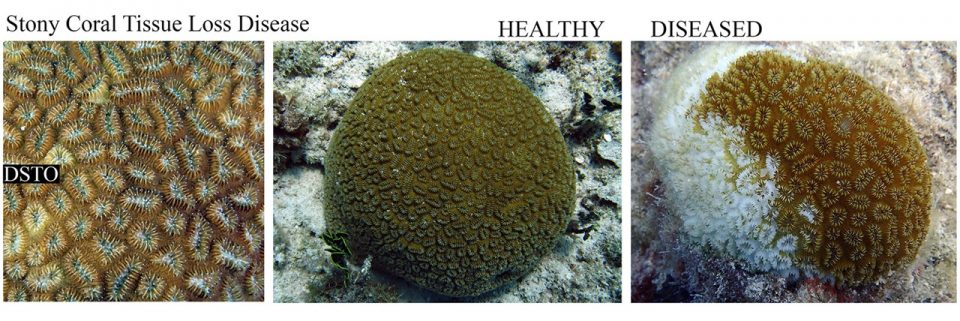HONOLULU (Eagle News) – The State’s Department of Land and Natural Resources (DLNR) has been monitoring the spread of Stony Coral Tissue Loss Disease (SCTLD), which was first discovered off the coast of Florida in 2014.
The disease has now spread along the entire coast of the Sunshine State and has been detected in 23 countries and territories in the Greater Caribbean Basin.

SCTLD can kill coral tissue at a rate of 1 to 2 inches (2.5 to 5 centimeters) per day and can affect more than 30 different species of coral.
“The coral loss that Florida and the Caribbean are experiencing is devastating,” said Brian Neilson, Administrator of the DLNR’s Division of Aquatic Resources (DAR). “We want to take every measure we can to prevent this coral disease from spreading to Hawaii’s reefs.”
Research has shown that disease-bearing microbes can be carried in vessel ballast water, and that ballast water management systems that use ultraviolet light (the most commonly-used system to sterilize ballast water) are only 50% effective at killing the pathogen. The pathogen can also remain alive in sediments and may potentially be transported to Hawai‘i if vessels don’t fully remove sediments from anchors, as an example.
With this new information, the State is proposing that vessels, which have been to a SCTLD-affected area within the last five ports, to not discharge ballast water within State waters, and to also send prior notification of arrival, with information about the vessel’s biofouling prevention practices, so a risk assessment may be conducted.
Ballast water is the seawater taken up by a vessel to regulate weight and balance and can be discharged in new ports. There is a small number of commercial and private vessels that arrive in Hawaii that would be subject to any new requirements.
Biofouling occurs when microbes, plants, and animals attach to the wet surfaces of a boat’s hull and other areas. Organisms in these biofouling communities may be carriers of this disease, causing SCTLD to be transported with the vessel.
According to Neilson, there are already several federal and state standard requirements that vessel operators must follow to aid in mitigating contamination by SCTLD.
“These additional measures, narrowly focused to further mitigate risk, will help vessel operators help us protect Hawaii,” Neilson explained. “If a vessel is considered to be a potential spreader of SCTLD, based on risk assessments, it will be red-flagged for further monitoring and preventative actions.”
(Alfred Acenas, Hawaii-Pacific Bureau, Eagle News Service)
